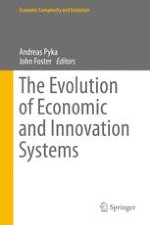2015 | OriginalPaper | Buchkapitel
Policy Exploration with Agent-Based, Economic Geography Methods of Regional Economic Integration in South Asia
verfasst von : Hans-Peter Brunner, Kislaya Prasad
Erschienen in: The Evolution of Economic and Innovation Systems
Aktivieren Sie unsere intelligente Suche, um passende Fachinhalte oder Patente zu finden.
Wählen Sie Textabschnitte aus um mit Künstlicher Intelligenz passenden Patente zu finden. powered by
Markieren Sie Textabschnitte, um KI-gestützt weitere passende Inhalte zu finden. powered by
